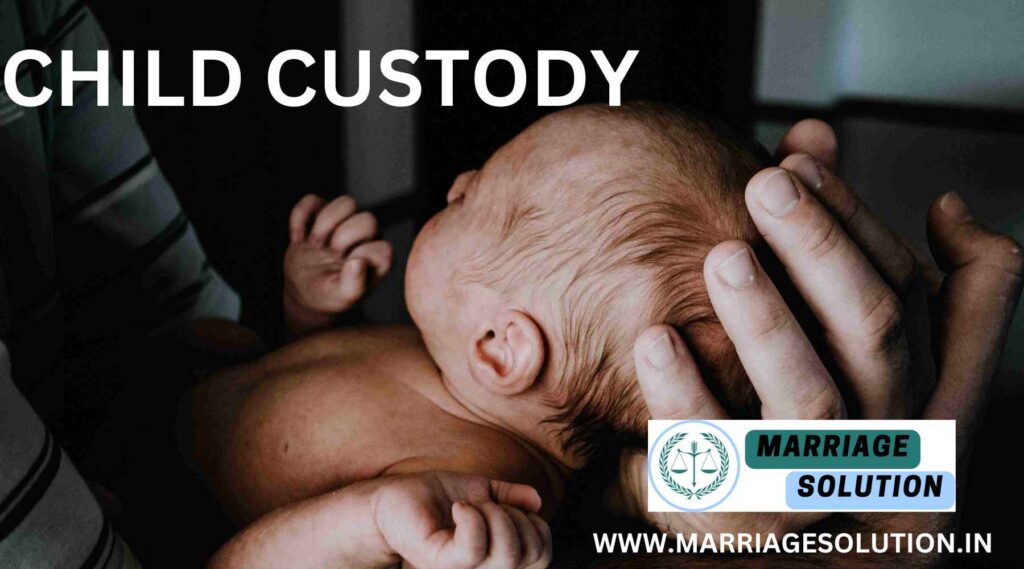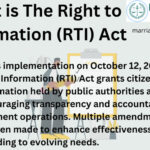- Introduction
- This act applies to Hindus, Buddhists, Jains, and Sikhs. Here are some key aspects of the Hindu Minority and Guardianship Act, 1956:
- Types of Child Custody:
- Best Interests of the Child:
- What is Child Custody as per Christian law ?
- What is Child Custody In Muslim?
- comparison between legal custody and physical custody
- If you require assistance with court or any other Child Custody.

Introduction
India, being a country with varied demographics, has multiple individual laws controlling several aspects of life such as family affairs and guardianship. When combined with central legislation, these personal laws often lead to differing legal scenarios. Custodial rights in cases of parental separation is one field where the influence of personal law is substantial. This article explores how Hindu Law deals with this matter specifically concerning custodial rights after parental detachment.
Custodial Rights Under Hindu Law:
Hindu personal laws, such as the Hindu Minority and Guardianship Act of 1956, the Hindu Marriage Act of 1955, and the Special Marriage Act of 1954 are primarily responsible for dictating custodial rights pertaining to children in cases where parents have separated. These legal frameworks outline strict guidelines concerning transferal procedures for Hindus.
Section 26 of the Hindu Marriage Act, 1955:
Section 26 of the Hindu Marriage Act, 1955, addresses matters related to the education and maintenance of a child when both parents are followers of the Hindu religion. Under this provision, the court can issue orders pertaining to the child’s welfare at any point in time, even if a divorce decree is pending. These orders can be passed within 60 days from the date of service of notice.
Section 38 of the Special Marriage Act, 1954:
The Hindu Marriage Act of 1955 has a provision in Section 26 which deals with the upbringing and upkeep of children when both parents follow the Hindu faith. This section empowers courts to make regular welfare arrangements for such children even before divorce proceedings are finalized. The court may issue these orders within two months from serving notice upon either party involved in dispute.
Hindu Minority and Guardianship Act, 1956:
The main objective of the Hindu Minority and Guardianship Act, 1956 is to determine custodial rights between biological parents within the Hindu community. This act does not take into account third-party custody rights. Its emphasis lies solely on deciding child custody arrangements when both parents are Hindus
It is noteworthy that the intention behind these regulations is to give precedence to the wellbeing of children, considering elements like their upbringing, maintenance and overall welfare. Although personal laws hold considerable significance in managing child custody arrangements for Hindus, safeguarding a child’s interests remains paramount during any custodial conflict.
This act applies to Hindus, Buddhists, Jains, and Sikhs. Here are some key aspects of the Hindu Minority and Guardianship Act, 1956:

1)Custody of a minor:
The main focus of this legislation is to establish the selection and power of guardians responsible for underage Hindus. The term “minor” denotes an individual who hasn’t reached 18 years old yet.
2) Guardians by nature:
The Hindu Minority and Guardianship Act outlines the natural guardians of a minor, which comprise firstly of the father followed by the mother. The father is endowed with primary guardianship responsibilities for the child; however, priority is placed on ensuring that decisions regarding custody prioritize what’s best for their welfare.
3) Guardians appointed through a will:
In Hinduism, parents are authorized to designate a testamentary guardian for their underage child through an official will or document of the same nature. The father is primarily responsible for making such arrangements; however, if he’s unable to do so due to death or disability, then it falls upon the mother’s responsibility.
4) Guardians by De Facto:
If a child’s legal guardian is unavailable or incapable of acting, the law acknowledges and empowers a de facto guardian. Such guardians are individuals who have been actively caring for the child over an uninterrupted span of at least five years and may be designated as official guardians under specific circumstances.
5)Guardians have powers and duties.
Under this act, appointed guardians are obliged to prioritize the minor’s best interests and possess the power to make decisions concerning their personal and financial affairs. These choices may include matters related to education, medical care, and upkeep.
6)Conclusion of Guardianship:
The court can end or discontinue guardianship as per this act when it is decided that the minor’s best interests are no longer being served.
Types of Child Custody:

Child custody laws generally recognize two primary types of custody:
1)Physical Custody: The allocation of physical custody determines the child’s residential arrangement and daily routine, either through exclusive physical custody (when one parent primarily hosts the child) or shared physical custody (when both parents are responsible for hosting).
2)Legal custody: involves the power to make crucial decisions about a child’s education, healthcare, religion and extracurricular activities. Whether it is vested in one parent alone or shared between both parents along with physical custody remains an option for consideration.
3) Sole Custody: In an arrangement of sole custody, only one parent is awarded with both the physical and legal responsibility for their child. This implies that the child resides primarily with a single parent who provides all necessary care while having full power to make crucial decisions concerning how to raise them.
4)Joint Custody: Joint custody pertains to the shared responsibility in raising a child. It can be categorized into two types: Joint Legal Custody and Joint Physical Custody. With joint legal custody, both parents possess the authority to make crucial decisions regarding their offspring’s education, health care, religion, and other significant facets of life; while physical custody may still fall under one parent only but with equal say for decision-making matters between both. On the other hand, joint physical custody involves splitting time equally between homes of each parent. A co-parenting plan must-be created by means important such as schedule arrangements or routine activities for better adjusting situation on kids involved in separation scenarios well-being purposes are secured at all times.
5)Split Custody: Split custody arrangements are relatively rare, and usually only arise when several children are involved. This involves separating siblings so that each parent is granted guardianship of one or more of their offspring. For instance, the elder child may be entrusted to one parent while the younger remains under the care of the other.
6)Bird’s Nest Custody: Bird’s Nest Custody is a distinctive way of sharing custody in which the child resides permanently in one home, also known as the “nest,” and both parents alternate living with their child on an agreed-upon schedule. The parent who doesn’t reside full-time keeps a separate residence but moves into and out of the family home based on this predetermined plan.
7)Third-Party or Grandparent Custody: There are instances where a court may grant custody to either a grandparent or third party, based on the child’s welfare. This is typically done when both parents have been assessed as incapable of providing the necessary stability for their offspring.
8)Supervised or Restricted Custody: When there are doubts about a parent’s capability to create a secure setting for their children, the court might direct either supervised or restricted custody. This indicates that visitation rights or parenting time is carefully observed by an impartial third party like a therapist or social worker.
9)Temporary Custody: During divorce or separation proceedings, temporary custody can be granted to provide stability for the child while a final custody arrangement is being determined.
Best Interests of the Child:
When determining child custody, the primary concern is always what will benefit the child most. The court focuses on factors that contribute to their welfare, protection and consistency of life.
B. 1)Factors Considered in Custody Decisions:
When determining child custody arrangements, courts often consider various factors, which may include:
- The physical and emotional needs of the child, as well as their age.
- The ability of each parent to offer a stable and nurturing environment.
- The relationships of the child with both parents and other notable individuals.
- The adjustment of the child to their present residence, educational institution and society.
- A record of previous incidents involving domestic violence or abuse.
2). Modification of Custody Orders:
Child custody orders are not necessarily permanent. If circumstances change significantly, a parent can request a modification of the custody arrangement. Common reasons for modification include changes in a parent’s living situation, job relocation, or concerns about a child’s safety.
3). Modification of Custody Orders:
Custody orders for children are subject to change, particularly when significant circumstances occur. For instance, parents can request alterations in the custody arrangement if they encounter a job relocation or concerns about their child’s safety due to changes in living conditions.
4). Mediation and Alternative Dispute Resolution:
Numerous regions promote mediation or alternative dispute resolution techniques for resolving custody conflicts between parents prior to resorting to a legal battle. An impartial third party guides the process of mediation, aiding in the achievement of an agreement that is mutually acceptable and child-centered compared to litigation which can be hostile.
5. Mediation and Alternative Dispute Resolution:
Numerous regions advocate for parents to settle custody conflicts through mediation or alternative dispute resolution processes in advance of pursuing legal action. Mediation entails a nonpartisan intermediary who assists both parties in arriving at a mutually agreeable conclusion that emphasizes the child’s best interests, as opposed to engaging in an antagonistic courtroom confrontation.
6. Enforcement of Custody Orders:
After a custody order has been put in place, both parents are required under the law to adhere to its provisions. If one parent disregards these terms and fails to permit visitation rights or any other court-required obligations, the other party may take legal action for enforcement through litigation processes.
One must be aware that child custody laws may differ greatly from jurisdiction to jurisdiction and can change with time. It is thus vital for you to seek counsel from a family law attorney in your particular area, so as to receive tailored guidance and comprehend how the regulations affect your individual situation.
What is Child Custody as per Christian law ?
Child custody laws for Christians in India are primarily governed by the Indian Divorce Act, 1869, for those who are married under Christian personal laws. The Indian Divorce Act addresses various aspects of family law for Christians, including marriage, divorce, and child custody. Here’s how child custody is typically handled under Christian personal laws in India:
Welfare of the Child:Under Christian law, the welfare of the child is paramount in all matters concerning child custody. It is crucial for courts to prioritize arrangements that are beneficial and advantageous for the well-being of children involved.
Guardian’s Authority:The Indian Divorce Act acknowledges a guardian’s control over a child who is below the legal age. Normally, this responsibility falls on either parent and their obligations concerning the welfare of the child are determined by law.
Custody Decisions: When making custody decisions, the court will consider the best interests of the child and may grant custody to either parent. In cases where a young child is involved, it’s typically presumed that providing them with a nurturing environment falls within their mother’s responsibilities; however this isn’t always true in every case since each one is determined on its individual merit following an assessment by the presiding judge.
Discretion of the Court:The court holds discretionary authority to issue custody orders, taking into account the distinct circumstances of each case. The child’s age, wellbeing, educational needs and overall welfare may also be considered in determining custody arrangements.
Variation of Custody:Variation of Custody is possible when the court deems it necessary for the child’s well-being. Such alterations may arise due to significant changes in either parent or child circumstances.
Access and Visitation:While Christian personal laws regulate child custody for Christians residing in India, it should be emphasized that the well-being of the child remains paramount. This is an overarching tenet when deciding on custodial arrangements regardless of religious affiliation. Determining who gets custody can differ depending on individual circumstances, and judgments will ultimately hinge upon pertinent details presented before court hearings.
What is Child Custody In Muslim?
Mother’s Right of Custody (Hizanat):Under Islamic law, the mother is granted primary custody rights (Hizanat) of her children. However, these rights may differ in scope and duration depending on various schools of thought within Islam.
Hanafi School: According to the Hanafi School, a mother is entitled to keep custody of her son until he turns seven years old and her daughter until she reaches puberty.
Shia School: According to Shia School, custody rights of a mother prevail over her son until he attains the age of two and over her daughter till she achieves seven years.
Father’s Right of Custody (Hizanat):The Father’s Custody Right (Hizanat): In the event that a mother loses her custody rights or it is deemed in the child’s best interest to be under their father’s care, he holds what is known as “Hizanat.” This right remains valid until his son reaches puberty and his daughter gets married.
Child’s Welfare: The welfare of the child takes precedence over Islamic personal laws regarding custody. Indian courts, including Family Courts, prioritize the best interest of the child when making decisions on custody. Hence, even if one parent has legal entitlement to custodianship according to Islamic law, custody may be awarded to the other parent as deemed fit for a good upbringing and wellbeing of the child by court orders.
Guardians and Wards Act, 1890:The Guardians and Wards Act of 1890 is an all-inclusive law in India that governs child custody matters, including those pertaining to Muslim communities. The act endows the court with the power to adjudicate guardianship and custody disputes solely on grounds that are beneficial for the well-being of a child without regards to parents’ religious convictions.
Child’s Preference: When children reach a certain age and are able to communicate their preferences, the court may take those wishes into consideration when determining custody in some cases. Nevertheless, it’s crucial to note that the child’s preference is merely one of several factors taken under contemplation by the court.
Visitation Rights: Visitation rights are typically granted to the non-custodial parent as a means of ensuring that they can maintain a relationship with their child.
Jurisdiction: Depending on the particular circumstances of child custody cases under Muslim personal law, such matters may be within the jurisdiction of Family Courts, District Courts or other relevant judicial authorities.
Child custody cases are known for their complexity and the final verdict is based on individual facts and circumstances. It’s highly recommended that parties embroiled in such disputes seek legal counsel from professionals specializing in family law. Furthermore, Indian laws continue to evolve with changing interpretations, hence consulting a legal expert ensures accurate information and guidance.
comparison between legal custody and physical custody
| Aspect | Legal Custody | Physical Custody |
|---|---|---|
| Definition | The right to make important decisions regarding the child’s upbringing, such as education, healthcare, and religious upbringing. | The right to have the child live with the custodial parent and make day-to-day decisions about the child’s activities and routine. |
| Decision-Making Authority | Grants the custodial parent the authority to make decisions about the child’s life, including education, healthcare, and religious practices. | Involves the custodial parent making decisions about the child’s daily activities, routines, and immediate needs. |
| Involvement in Major Decisions | Typically shared between both parents in joint legal custody, requiring communication and agreement on important matters. | Involves the custodial parent having primary responsibility for making major decisions, while the non-custodial parent may still have input. |
| Geographical Considerations | Legal custody can be joint even if parents live in different locations, as it pertains to decision-making authority. | Physical custody is closely tied to the child’s residence, determining where the child primarily lives and spends their time. |
| Interaction Frequency | Non-custodial parent may not have daily interactions but is involved in major decisions and may have visitation rights. | Custodial parent has day-to-day interactions with the child, providing care and meeting immediate needs. |
| Examples of Decisions | Educational choices, medical treatments, religious upbringing, and extracurricular activities. | Daily routines, bedtime, meals, discipline, and immediate care. |
| Court Terminology | Joint Legal Custody, Sole Legal Custody, or Joint Custody with Decision-Making Authority. | Joint Physical Custody, Sole Physical Custody, or Joint Custody with Primary Residence. |
If you require assistance with court or any other Child Custody.
court or any other marriage-related issues, our Home – MarriageSolution.in: Your Trusted Partner in Family Legal Matters. Law Services, IPC Section blog, Expert Advice, court cases lawyer help. website may prove helpful. By completing our enquiry form and submitting it online, we can provide customized guidance to navigate through the process effectively. Don’t hesitate to contact us for personalized solutions; we are here to assist you whenever necessary!
What is child custody?
Child custody refers to the legal and physical responsibility for a child’s care, upbringing, and well-being, typically after the parents’ separation or divorce.
What types of child custody arrangements are there?
The main types of child custody arrangements include sole custody (where one parent has primary custody), joint custody (where both parents share custody), and split custody (where siblings are divided between parents).
How is child custody determined?
Child custody is determined based on the best interests of the child, taking into account factors such as the child’s age, health, emotional needs, and the ability of each parent to provide a stable and nurturing environment.
What factors are considered in determining the best interests of the child?
Factors considered in determining the best interests of the child may include the child’s relationship with each parent, the ability of each parent to provide for the child’s needs, any history of abuse or neglect, and the child’s preferences if they are old enough to express them.
Can child custody arrangements be modified?
Yes, child custody arrangements can be modified if there is a significant change in circumstances or if one parent demonstrates that the current arrangement is no longer in the child’s best interests.
- AFSPA Act
 AFSPA act mean Armed Forces Special Powers Act (AFSPA) grants special powers to the Indian Armed Forces in areas classified as “disturbed” due to significant insurgency or internal disturbances.
AFSPA act mean Armed Forces Special Powers Act (AFSPA) grants special powers to the Indian Armed Forces in areas classified as “disturbed” due to significant insurgency or internal disturbances. - Right to Information RTI act :Your Comprehensive Guide (Part 1)
 The Right to Information (RTI) Act : Explore the essence of the Right to Information (RTI) Act through this symbolic image. The image features legal documents, emphasizing the importance of transparency and accountability in governance. The scales of justice represent the balance achieved through the citizens’ right to access information.
The Right to Information (RTI) Act : Explore the essence of the Right to Information (RTI) Act through this symbolic image. The image features legal documents, emphasizing the importance of transparency and accountability in governance. The scales of justice represent the balance achieved through the citizens’ right to access information. - What is Article 371 of Indian Constitution ?Article 371 of the Indian Constitution grants special provisions to specific states and regions within India, addressing their unique historical, social, and cultural circumstances. These provisions aim to accommodate diverse needs and protect cultural identities within the constitutional framework.
- Indian Labour law : Your Comprehensive Guide (Part 1)
 The purpose of labour laws is to safeguard employees and guarantee equitable treatment at the workplace, encompassing aspects such as remuneration, security, and perks. These regulations establish a secure ambiance by imposing minimum wage requirements, ensuring factory safety measures are implemented effectively while granting rights like maternal leave entitlements. Abiding by these principles promulgates an impartial work culture encapsulating upright conduct; thereby cultivating conducive surroundings for progressive development.
The purpose of labour laws is to safeguard employees and guarantee equitable treatment at the workplace, encompassing aspects such as remuneration, security, and perks. These regulations establish a secure ambiance by imposing minimum wage requirements, ensuring factory safety measures are implemented effectively while granting rights like maternal leave entitlements. Abiding by these principles promulgates an impartial work culture encapsulating upright conduct; thereby cultivating conducive surroundings for progressive development. - GST :Your Comprehensive Guide (Part 1 – Understanding the Basics)
 The Goods and Services Tax (GST) is like a big change in how we pay taxes in India. It started on July 1, 2017, and it’s here to simplify things. Before GST, we had many different taxes, and it could get confusing. Now, with GST, it’s like combining all those taxes into one. The idea is to make taxes more straightforward, clear, and fair for everyone. It applies to almost everything we buy or sell, and it’s helping India’s businesses and economy work better together. So, GST is not just a tax change; it’s a step towards making things simpler and better for all of us.
The Goods and Services Tax (GST) is like a big change in how we pay taxes in India. It started on July 1, 2017, and it’s here to simplify things. Before GST, we had many different taxes, and it could get confusing. Now, with GST, it’s like combining all those taxes into one. The idea is to make taxes more straightforward, clear, and fair for everyone. It applies to almost everything we buy or sell, and it’s helping India’s businesses and economy work better together. So, GST is not just a tax change; it’s a step towards making things simpler and better for all of us.
